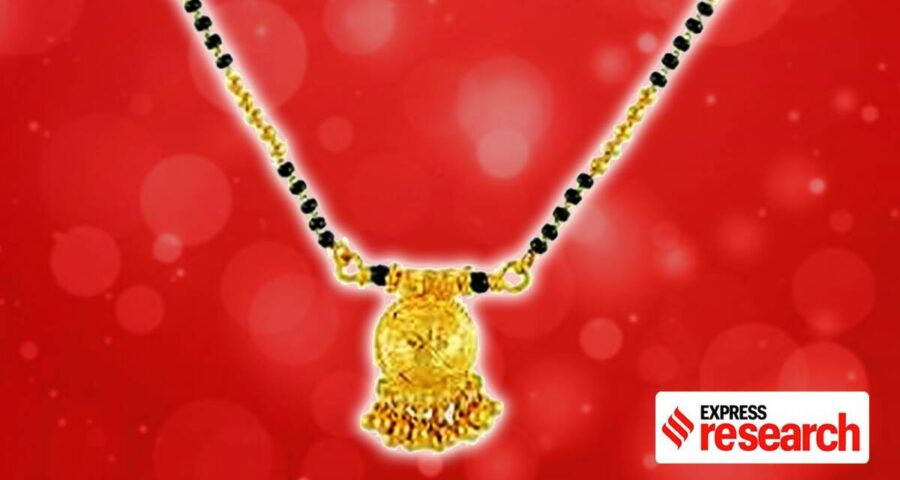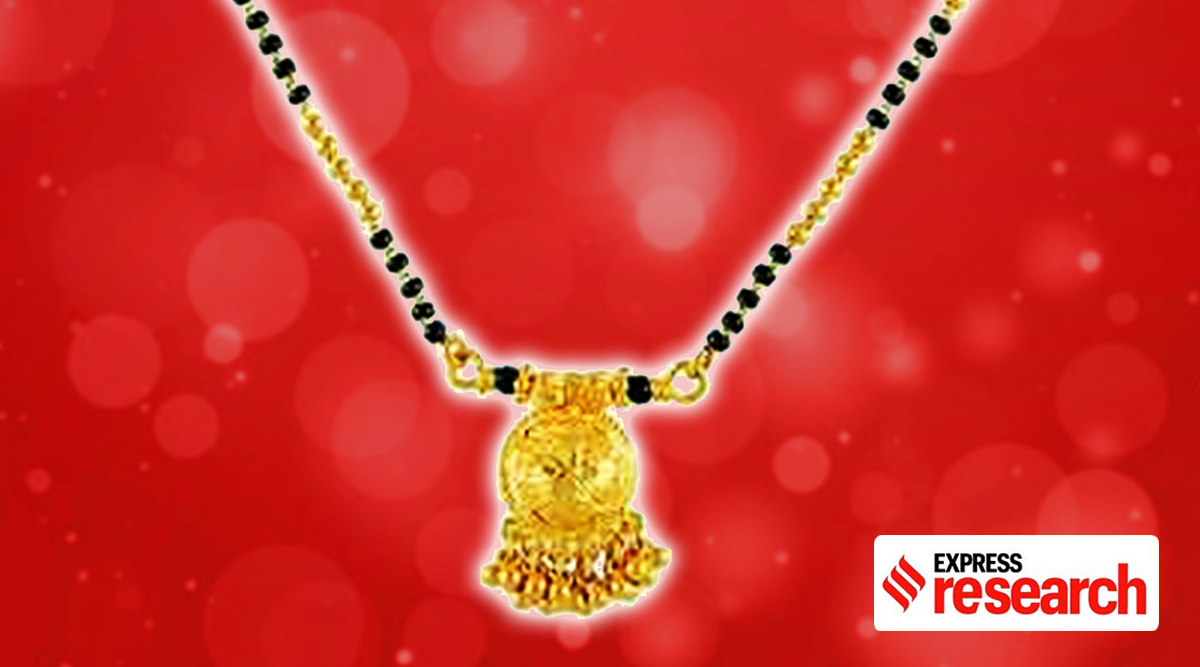While the idea of a sacred thread did exist and so did the practise of adorning the bride with jewellery, the ritualistic aspect of a mangal sutra along with the many class, caste and community distinctions in it is a fairly modern concept.
The sacred thread of Hindu marriage, Mangal Sutra, recently made headlines for its alleged appropriation by fashion designer Sabyasachi. Although the advertisement campaign that intended to portray Indian culture through a modern, inclusive lens has been withdrawn, it has left several questions unanswered about the sociological undertones of a mangal sutra.
“There was no concept in ancient India of a marriage being solemnised through a mangal sutra as we know of it today with diamonds, pendants and the like,” explains historian of Indian jewellery, Dr. Usha Balakrishnan. As she explains, while the idea of a sacred thread did exist and so did the practise of adorning the bride with jewellery, the ritualistic aspect of a mangal sutra along with the many class, caste and community distinctions in it is a fairly modern concept.
The purpose of the wedding jewellery
Balakrishnan along with Meera Sushil Kumar in their book, ‘Indian jewelry: The dance of the peacock’ write that historically in India “ornaments functioned as auspicious symbols of marital status”. The only time one gave up on them was on the occasion of widowhood or while giving up on worldly affairs. The authors cite the Atharvaveda which said that the marriage ceremony concludes with the father of the bride stating, “I give away this girl adorned with gold ornaments to you.”
The Manusmriti categorises bridal jewellery as her ‘stridhan’, the only kind of property that is irrevocably hers. In a male-dominated and unsupported social structure, the marital jewellery came as financial security against widowhood and old age.
The mangal sutra, as Balarishnan explains, is not mentioned in any religious text as a ‘marriage ornament’. The Grihya Sutras (Hindu texts prescribing ceremonies for each stage of an individual’s life) make no mention of the practise of tying a mangalsutra for the sake of solemnising a marriage. “Etymologically, the mangal sutra refers to an auspicious thread. Traditionally and even today during auspicious occasions, a thread dipped in turmeric or kumkum is tied around the pulse points of the body like the neck or the wrist. Mangal sutras were basically talismans tied/worn to protect, ward off the evil effects of the planets and to give courage,” she says.
Speaking about the archaeological evidence of wedding ornaments, Dr. Preetha Nair, head of the department of archaeology in the University of Kerala, says that from the early historic period (roughly corresponding to 500 BCE and 500 AD), we get several black beads which were perhaps used for making the mangal sutra later. “However, it is impossible to suggest whether they were worn only by married women or unmarried ones as well,” she says. “However one of the earliest literary references to a string being tied by the groom around the neck of the bride is from the Sangam literature (300 BCE to 300 CE), which can provide some evidence of the presence of something like a mangal sutra.”
The adoption of the mangal sutra by different communities
Balakrishnan and Kumar explain in their book that the practise of tying the mangal sutra during marriage had more to do with convention than religion. Traditionally a sacred thread was worn by both men and women as part of their initiation into the life of a student. As the practise faded away for women, the sacred thread was adapted as tiru-mangalam or mangal sutra to “sanctify a woman’s marital status and accord her social recognition”. “Often on, this string was accompanied with a motif like a leaf from an auspicious tree, a tiger claw or anything that was symbolic within that community,” says Balakrishnan.
Over the years, the motifs and make of the mangal sutra came to differentiate among caste and communities as well. In Tamil Nadu and Kerala, for instance, the mangal sutra is known as the tali, which refers to a species of the palm tree or a grove of palms. “Though literary evidence is neither consistent nor conclusive on the origin of the term, even today among the Gonds, Savaras and Munda tribes, the bridegroom ties a string with a palm leaf around the bride’s neck,” write Balakrishnan and Kumar.
Variations of the tali often indicate the natural or supernatural phenomenon revered by a community or tribe. The amai-tali, for instance, carries the emblem of a tortoise. The pulippali-tali, on the other hand, displays a set of tiger’s claws. A Shaivite Brahmin Tali carries the representation of the Lingam or the three horizontal lines of the caste mark.
A most splendid variation of the tali is the necklace of the Nattukottai Chettiars of Chettianadu in Tamil Nadu. The community is known to have originated from the ancient sea port of Puhar and their patron deity is Lord Shiva, while their most important shrine is the Nataraja Temple in Chidambaram. “The necklace is a magnificent ornament made up of two rows of horizontal beads, interspersed with elaborate pendant pieces and an ornate tali pendant in the centre,” describe Balakrishnan and Kumar. “The traditional M shaped centrepiece of the necklace features a miniature replica of the temple in Chidambaram worked in repousse. Within this temple, Shiva and his consort Parvati are depicted seated on their vehicle, the bull. The claw-like pieces on either side are embellished with artistic details typical of the architecture of Chettinad.”
The practise of tying the mangal sutra has seeped into religious groups other than Hindus as well, and is often adapted to indicate their own belief systems. “For instance, the Syrian Christians in Kerala wear a mangal sutra, but with a cross on it,” says Balakrishnan.
There are other communities though among whom the mangal sutra seems to be absent. Other forms of marital tokens though seem to have taken its place, encapsulating the same idea and objective as that of the mangal sutra. In large parts of north India for instance, the bicchwa or the toe ring and glass bangles are supposed to indicate marital status of a woman. The Kashmir marriage symbol consists of a long string, drawn through a hole pierced in the cartilage of the ear, with an ornament at the end.
In Bengal, the shell and coral bangles or the shaakha pola is worn as an indicator of marital status. “The pola for instance signifies the strength of iron wished upon the woman. It also consists of lead. It is believed that a small quantity of lead is good for the body to absorb through the bloodstream. It is considered all the more important for women who are expected to bear children,” says Balakrishnan. The shell, she says, is an indicator or a fish-eating ocean bound community. “The shell is an important symbol of prosperity and longevity.”
Speaking about the rebranding of marital tokens in recent times, Balakrishnan says that “marketing companies in the west took a diamond ring and turned it into an object that was compulsory to sanctify a marriage. Every woman, therefore, wanted that ring as the ultimate symbol of a man’s love and devotion to her.” The evolution of the mangal sutra over centuries is best understood in the same context.
Source: Read Full Article


